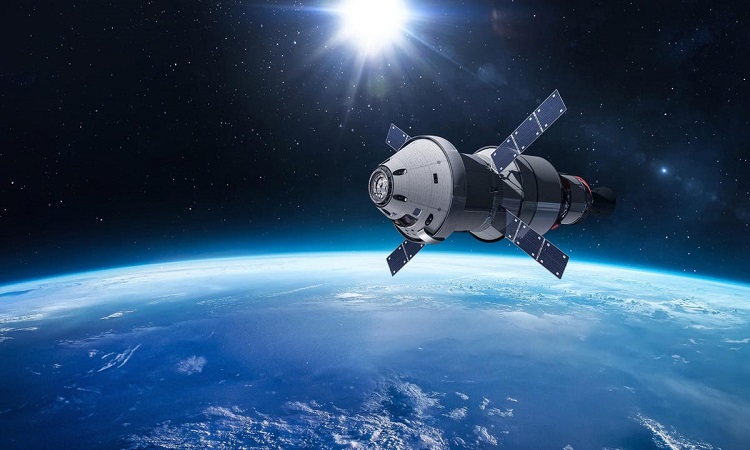2022 will again have been a rich year for space exploration, with notable successes such as the completion of the Artemis 1 lunar mission, the inauguration of the James Webb Telescope and the assembly of the new Chinese space station. However, it is not over. 2023 is also shaping up to be another busy year. Here are some of the most anticipated missions.
JUICE on its way to Jupiter
JUICE (Jupiter Icy Moon Explorer) is ESA’s next big deep space mission. Its launch is scheduled for next April during a 10-day window. Its main objective, as its name suggests, will be to study the system of Jupiter. The probe, which will arrive in 2030, will also focus on three of the most interesting Jovian moons: Europa, Ganymede and Callisto.
Ganymede, in particular, will be mainly targeted. According to observations made by Hubble, an ocean larger than all those on Earth is indeed housed under its thick icy crust. To operate, the probe will have no room for error. JUICE will indeed fly over this moon only twice, placing itself about 400 km above the two hemispheres.
Recall that the United States is also planning to send a new probe to the region as part of its Europa Clipper mission. Its launch is however scheduled for 2024 aboard a SpaceX rocket.
The flight of the Starship
No official date has yet been announced by SpaceX for the Starship’s first orbital flight. However, it is reasonable to think that this will take place during the first quarter of 2023. The holding of this mission had required a long environmental review by the Federal Aviation Administration (FAA) of the United States, which finally gave its agreement under certain conditions. terms. SpaceX still had to take several dozen measures to reduce its environmental impact on the region.
For this flight, the Starship will be propelled into space by its Super Heavy booster. A priori, it is not expected that it will return to Earth. For its part, the vessel will attempt a landing off Hawaii. The mission should last approximately 90 minutes.
Eventually, the Starship will be the largest spacecraft in the world. SpaceX will use it to deliver satellites into orbit like a gigantic PEZ, but also to land humans on the Moon, and later on Mars.
DearMoon
A few months ago, billionaire Yusaku Maezawa was invited to take up residence on the Starship as part of a six-day private mission around the Moon dubbed DearMoon. This will be the first true deep space tourism launch, marking a real turning point in this burgeoning industry. The guest list has just been released. The launch is scheduled for 2023, but this schedule will mainly depend on the first orbital flight of the Starship mentioned above.
Return of samples
On October 21, 2020, OSIRIS-REx successfully landed on the asteroid Bennu to collect samples. On site, the probe collected more than sixty grams in order to bring them back to Earth. The latest news is that the probe is still scheduled to “drop off its package” on September 24 over Utah.
The cargo will then be recovered and taken to a dedicated laboratory to avoid any risk of contamination. The samples will then be analyzed by state-of-the-art instruments.
Bennu, which is barely half a kilometer in diameter, has many interesting features. NASA thinks it broke away from a much larger object during the first ten million years of the solar system. Some of the minerals detected inside also suggest that this ancient parent body had liquid water. By analyzing these samples, researchers hope to learn more about the building blocks of the solar system and potentially even those of life itself.
Such a return of asteroid samples has only been done once before. It was in 2020, with the Japanese Space Agency’s Hayabusa 2 mission. The probe has since left for new adventures.




